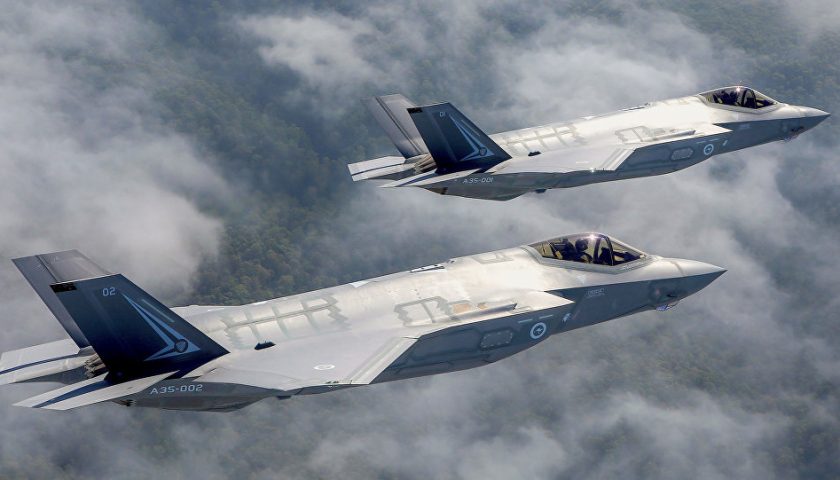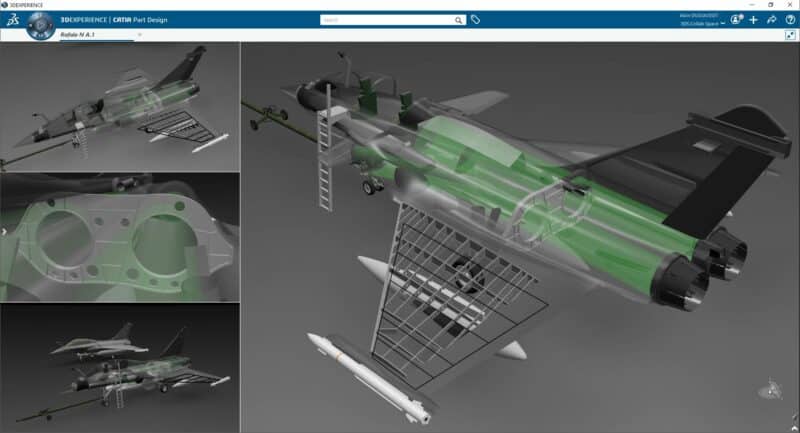Since the beginning of 2022, the FCAS program for Future Air Combat System, which brings together Germany, Spain and France, with a view to designing the replacement for the Rafale French and Typhoon European, is at a standstill, against a backdrop of deep disagreement about the industrial sharing around the first pillar of the program to design the NGF, Next Generation Fighter, the combat aircraft at the heart of this program. Indeed, the two major manufacturers of the program, the French Dassault Aviation and the German Airbus Defense & Space, are unable to agree on a compromise on the management of this pillar, initially attributed to Dassault but disputed in its current form. by Airbus. These tensions are, in fact, only the emerging part on the public scene of deep divergences which hinder the smooth running of this European program which was intended, when it was launched by Angela Merkel and Emmanuel Macron, to represent the heart of the effort towards a reinforced European defence.
If until a few weeks ago, the tensions seemed to concern only Dassault and Airbus DS, these have largely exceeded the purely industrial framework in recent days, after the German armies had, in a report, indicated that in the event dead end, the program had to be terminated. Last week facing the Senate, the French Minister for the Armed Forces, Sebastien Lecornu, for his part indicated that he intended to meet his German and Spanish counterparts in September on this subject, while slipping to the senators that he supported French industry. and the positions of Dassault Aviation. To put an end to this very unattractive picture, Dassault Aviation indicated that the program had, in 2 years of cooperation, recorded 3 years of additional delays, and that it was now very unlikely, if the program were to come to an end, that it can deliver an operational combat aircraft before 2045 or even 2050, which is not without posing major problems for the air forces of the 3 countries which would risk, in this case, finding themselves in a situation of operational weakness on the period 2040-2050, even though everything indicates that the two decades between 2030 and 2040 will be the scene of a peak of geopolitical instability in the world, including in Europe.

Should we really try to save FCAS?
The growing difficulties encountered by the FCAS program, and the endemic distrust between the German and French defense industries, have led to a certain form of radicalization of the positions of many military, industrial and even political actors on the subject of this cooperation. In fact, on both sides of the Rhine, more and more voices are more or less openly calling for an end to this programme, whether it means turning to other European partnerships such as with the Great -Brittany or Italy, towards the historical American partner or to develop the program independently, even if it means considering reducing its ambitions. Surprisingly, the two camps consider that the agreements which frame the program are not balanced and to the benefit of the other, whether it is an industrial sharing which would not respect the principle of "Best Athlete" and which would be too much in favor of German companies on the French side, or of an industrial and technological cooperation deemed too opaque and the fear of representing only a cash drawer to develop capacities claimed only by France (Deterrence, Embedded Aviation) on the German side . In addition, like the MGCS new generation combat tank program, it appears more and more that the operational expectations of the French and German air forces diverge well beyond cosmetics, leading everyone to fear developing the aircraft. on the other, not the one his air force needs.
Under these conditions, calling for the premature end of the FCAS may seem the best solution to avoid wasting precious time when the geostrategic situation and the arms race no longer allow such hesitation. However, if the programs were to split, each developing its own combat aircraft as was the case for the Rafale/Typhoon in the 90s and for the Tornado/Mirage 2000 in the 70s, the European aeronautical industry, as a global entity, would maintain a position at best identical to that which it holds today, and from which we can see the weaknesses in the face of the F-35 tidal wave in Europe. Indeed, beyond the first orders based on ab-initio industrial cooperation, such as with Great Britain, Italy and the Netherlands, the success of the F-35 in Europe can today be largely explained by the fact that it now represents an aeronautical defense standard in Europe, while 12 countries of the old continent have decided to equip themselves with the American aircraft. In fact, like the success of the tank Leopard 1&2 or the F-16 in their time, many air forces have chosen the Lighting 2 in recent years due to the industrial and commercial dynamic it represents, and which no European aircraft manages to challenge.

By dividing the programs, this same situation will persist in Europe for the next generation of combat aircraft, with the risk of seeing the European industrial offer dwindle in this field, in the face of American omnipresence and the emergence of new players likely to reduce the extra-European export markets essential to its survival. On the other hand, a joint program bringing together Germany, France and Spain would not only make it possible to target an initial fleet of 600 to 700 aircraft, but also to strengthen the attractiveness of the offer on the European and international scene, so as to exceed the threshold allowing this system to establish itself as an operational standard, like what the F-35 represents today within a strategic perfectly mastered by Lockheed-Martin in this field. Indeed, the more a device is distributed, the more it is attractive not only for customers who see a lower risk in the long term, but also for manufacturers who develop peripheral systems, such as armaments, who see a large potential market in it. accessible, making the device a standard, even a norm, even if it is based on many proprietary technologies, as is the case with the F-35. In fact, if splitting the FCAS program may appear to be a rational and effective decision in the short term to preserve the industrial and operational interests of the countries, allowing it to continue constitutes incontestably the most reasonable decision for those who want to guarantee the sustainability of the industry. European military aeronautics.
Digital Twin Technology
However, saving FCAS today appears as difficult as solving the 3-body problem. Indeed, the differences, both from an industrial and operational point of view between France and Germany, and the mistrust between the two sides of the Rhine, are such that it seems impossible to bring this program to completion and actually design a combat aircraft and its system of systems common between Paris and Berlin. Even a firm political decision now seems irrelevant, as it would oppose the rejection of industrialists, and it would only last for the duration of an electoral mandate. To achieve this, it would therefore be necessary to undertake a profound conceptual change within the program itself, offering the necessary flexibility to allow divergences to be expressed, while capitalizing on the greatest number of convergences. In this context, the solution could well come from a technology now perfectly mature and used by the aeronautical industry for two decades, the Digital Twins.


The rest of this article is for subscribers only
The Classic subscriptions provide access to
all articles without advertising, starting at € 1,99.
Newsletter subscription
Register for the Meta-Defense Newsletter to receive the
latest fashion articles daily or weekly


[…] […]